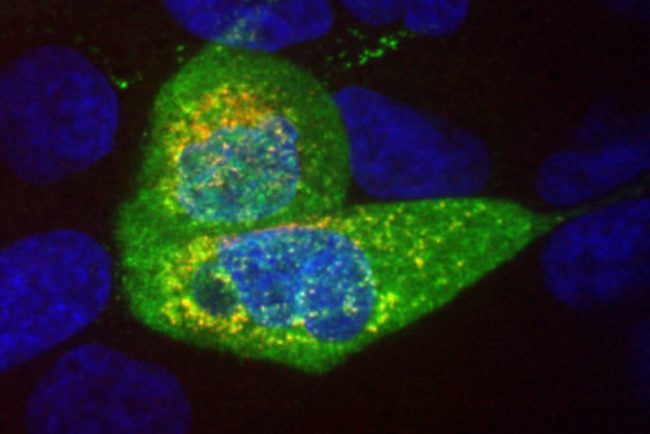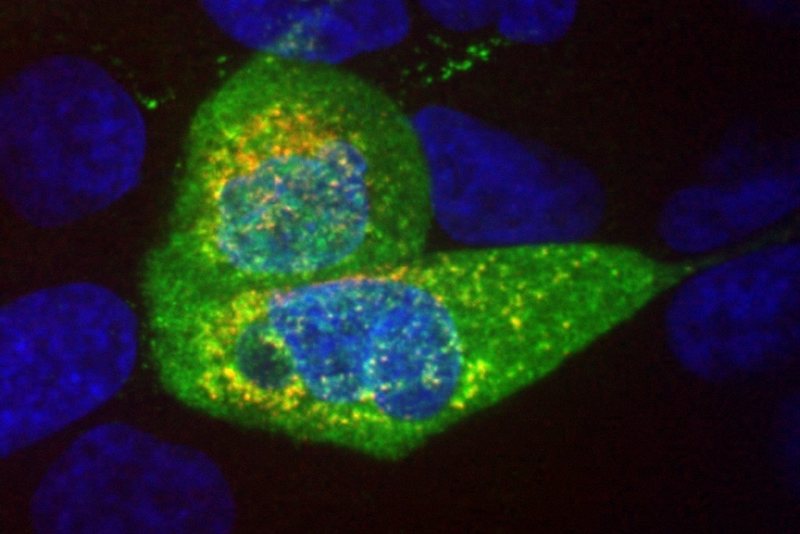
Credit
Alexsia Richards/Whitehead Institute
This is a very interesting study. Before we get into it, let’s be clear, it is tentative. The word “May” within the title is very important. The essence of it all is this; there is a growing thought that some people exposed to SARS-CoV-2 end up with bits of it becoming embedded within their DNA.
This is wholly credible. Our Genome is packed full of genetic fragments that came from viruses. It would appear that SARS-CoV-2 has potentially joined them. But … (We will get to that a bit later).
One Big Worry here
The idea that COVID-19 could mess with our DNA will most probably be weaponised into disinformation by anti-vaccine loons, so it is worth understanding what the study actually does.
The Backstory
Early on in the Pandemic healthcare workers noticed something very strange. Some people who had fully recovered from COVID-19 were still testing positive, not just weeks, but months later. There was no evidence that they had live viruses in their system, so this was a bit of a mystery, what was going on?
Perhaps it was RNA. Nope, that only sticks around for minutes, not months.
The new paper now published on PNAS might have an answer, but it also might not.
Let’s take a look.
The Paper: Reverse-transcribed SARS-CoV-2 RNA can integrate into the genome of cultured human cells and can be expressed in patient-derived tissues
The paper is described as follows …
An unresolved issue of SARS-CoV-2 disease is that patients often remain positive for viral RNA as detected by PCR many weeks after the initial infection in the absence of evidence for viral replication.
We show here that SARS-CoV-2 RNA can be reverse-transcribed and integrated into the genome of the infected cell and be expressed as chimeric transcripts fusing viral with cellular sequences. Importantly, such chimeric transcripts are detected in patient-derived tissues. Our data suggest that, in some patient tissues, the majority of all viral transcripts are derived from integrated sequences. Our data provide an insight into the consequence of SARS-CoV-2 infections that may help to explain why patients can continue to produce viral RNA after recovery.
This paper, that comes from the lab of Whitehead Institute Member and MIT professor of biology Rudolf Jaenisch, presents the distinct possibility that sequences of the coronavirus could be copied and pasted into our genome
Important Note: There are some credible subject matter experts within the scientific community that have not been convinced by the evidence. More on that shortly.
What the paper does is to demonstrate a possibility, it does not verify that this is actually happening.
They show that genetic sequences from the RNA virus SARS-CoV-2 can integrate into the genome of the host cell through a process called reverse transcription. These sections of the genome can then be “read” into RNAs, which could potentially be picked up by a PCR test.
This involved infecting human cells, that were not in a human, but in a petri dish. They then sequenced the DNA from these cells and found fragments of viral genetic material.
Observation: None of the inserted fragments was enough to recreate a live virus
They do make clear that they looked very carefully …
We used three different approaches to detect genomic SARS-CoV-2 sequences integrated into the genome of infected cells. These approaches were Nanopore long-read sequencing, Illumina paired-end whole genomic sequencing, and Tn5 tagmentation-based DNA integration site enrichment sequencing. All three methods provided evidence that SARS-CoV-2 sequences can be integrated into the genome of the host cell.
Retrotransposon?
They did what?
OK, a closer look.
Transposons, sometimes called “jumping genes,” are sections of DNA that can move from one region of the genome to another. They are often activated to “jump” in conditions of high stress or during cancer or aging, and are powerful agents of genetic change.
“There’s a very clear footprint for LINE1 integration,” Jaenisch says. “At the junction of the viral sequence to the cellular DNA, it makes a 20 base pair duplication.”
One common transposon in the human genome is called the LINE1 retrotransposon, which is made up of a powerhouse combination of DNA-cutting machinery and reverse transcriptase, an enzyme that creates DNA molecules from an RNA template (like the RNA of SARS-CoV-2).
What are the implications of this in the real world?
In the future, they plan to investigate whether the fragments of SARS-CoV-2 genetic material could be made into proteins by the cell.
“If they do, and trigger immune responses, it may provide continuous protection against the virus,” Zhang says.
They also hope to investigate whether these integrated sections of DNA could be partly to blame for some of the long-term autoimmune consequences that some COVID-19 patients experience.
“At this point, we can only speculate,” says Jaenisch. “But one thing we do think we can explain is why some patients are long-term PCR positive.”
Now comes the skeptical bit.
There is also valid criticism
Before you rush off embracing this as a solid conclusion, you might perhaps consider what critics are saying. Take for example McGill university …
What the researchers are alleging based on their laboratory experiments and their scrutiny of the genetic material collected from people with severe COVID-19 is that our own LINE-1 elements—these stretches of DNA that have the machinery necessary to pluck themselves free from the DNA molecule and reintegrate elsewhere—can grab hold of the coronavirus’ RNA that is floating around, transform it back into DNA, and integrate it inside our own DNA as if it were a long jumper competing for the gold.
To be fair, some viruses can do that. Famously, HIV, a retrovirus, comes with the necessary machinery to slide itself into our genome. Some viruses that are not retroviruses can even do that. Our genome and that of other animals bear the marks of many viruses that, over the course of millennia, have been swallowed up by our DNA. But, and this is a telltale “but,” as Professor Aris Katzourakis, who studies the integration of viruses into animal genomes at the University of Oxford and who was critical of this PNAS paper on Twitter, told me, “there are no known integrations of coronaviruses at all in any of the genomes that have been published.”
At the start of the pandemic, he consulted databases out of professional curiosity to see if he could find traces of the genetic material from any of the many coronaviruses in existence integrated in any of the couple of thousands of animal genomes available. He did not find anything even remotely coronavirus-like. After hundreds of millions of years of evolution, despite LINE-1 elements existing and despite coronaviruses infecting animals left and right, there was no trace of coronaviruses having jumped inside animal genomes. What were the odds that this brand-new SARS-CoV-2 coronavirus managed to do just that in a matter of months? “That would be a really big surprise,” he said to me.…
…
…One of the reality checks we need to bring up with regards to the paper is that most (but not all) of their data comes from an experimental system that does not reflect reality, but rather acts as a proof of principle.…
…You can make something happen artificially that would not happen naturally, including integration. “LCMV, lymphocytic choriomeningitis virus, is a non-integrating virus,” Pr. Katzourakis told me, “but if you stick it in a cell line experiment expressing very, very high levels of LINE-1 and make the cell line permissive, you can make a virus that doesn’t normally integrate into a cell line.”…
…The evidence presented here is very artificial and unconvincing to me, although I applaud the researchers for not only doing important work but for collaborating with one of their early critics, Stephen H. Hughes, to improve the quality of their paper. I could very charitably say that maybe, maybe there is something there, but better studies are needed….
It was perhaps an early draft of the paper last Dec that has led to the “Vaccines will mess with your DNA” anti-vax claims. This peer-reviewed paper will predictably lead to that disinformation being given a boost and propagated by people who simply don’t understand it, but instead have a very specific agenda to promote.
To be wholly and complete clear. Even if this is confirmed to be correct, and that’s a very big if, the authors of the paper themselves have very bluntly said their study does not imply the COVID-19 vaccines could integrate their DNA or RNA into our genome.
If you want to embrace the paper as a serious possibility, then you need to understand what the authors of the paper are saying.
Always remember this – If the anti-vax community wish to make a scientific claim, then they need to provide credible evidence for such claims and publish details in a credible peer-reviewed journal. They don’t do that because they simply don’t do science. Crowbarring papers such as this by slicing and dicing and quote-mining the content to fit their already preexisting conclusion, is not “research”.
Further Reading
- MIT: New research reveals why some patients may test positive for COVID-19 long after recovery
- Science Alert: Strongest Evidence Yet Shows SARS-CoV-2 May Insert Itself Into The Human Genome
But also …
